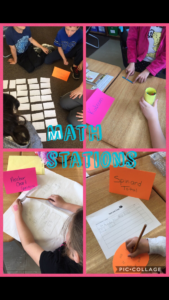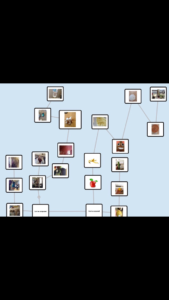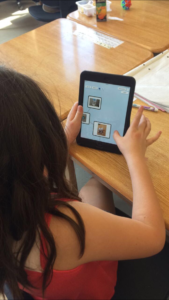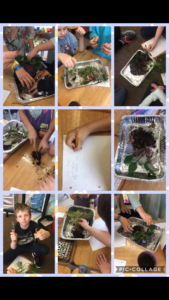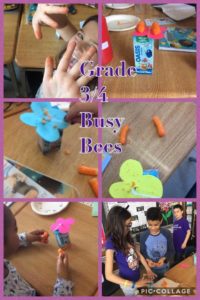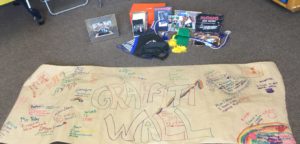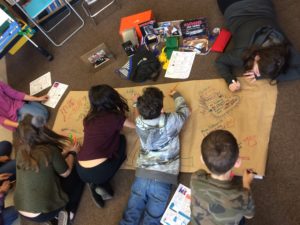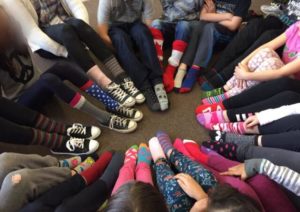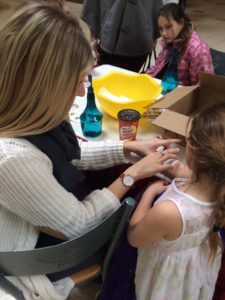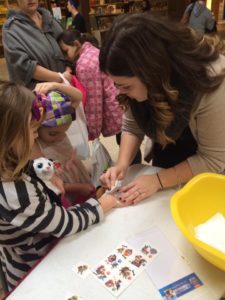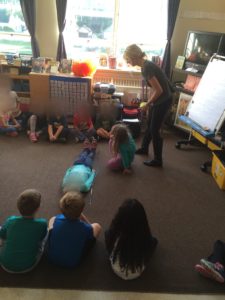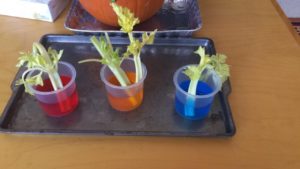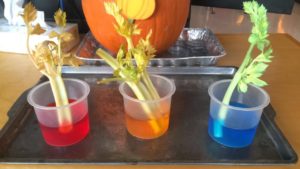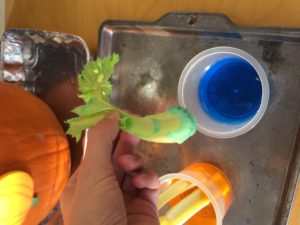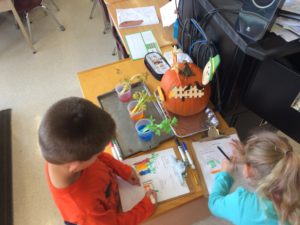The students were learning about money, so I created 4 math stations to further the students learning. The first math station was called KABOOM! There were about 40 popsicle sticks in a cup and some were labelled with coins to add up and others had the word KABOOM! on it. The students were required to pick a popsicle stick without looking, and add up the money amount. If they picked up a KABOOM! popsicle stick, then they have to put all the popsicle sticks they collected so far back into the cup. The second math station was a match game. The students had to match the coin amount with the written money amount. For example, (25)(25)(25)(25)(25) on one card and $1.25 on another. The third math station was called anchor chart questions. The students were given half of an anchor chart and two word problems that required them to add up money amounts and figure out the total of a purchase. The last math station was called spin and total. Students were given spinners and a piece of paper, every time they spun the spinner, they would write down the coin it landed on. They were required to do this five times in each row and total up all the coins in the right column.
